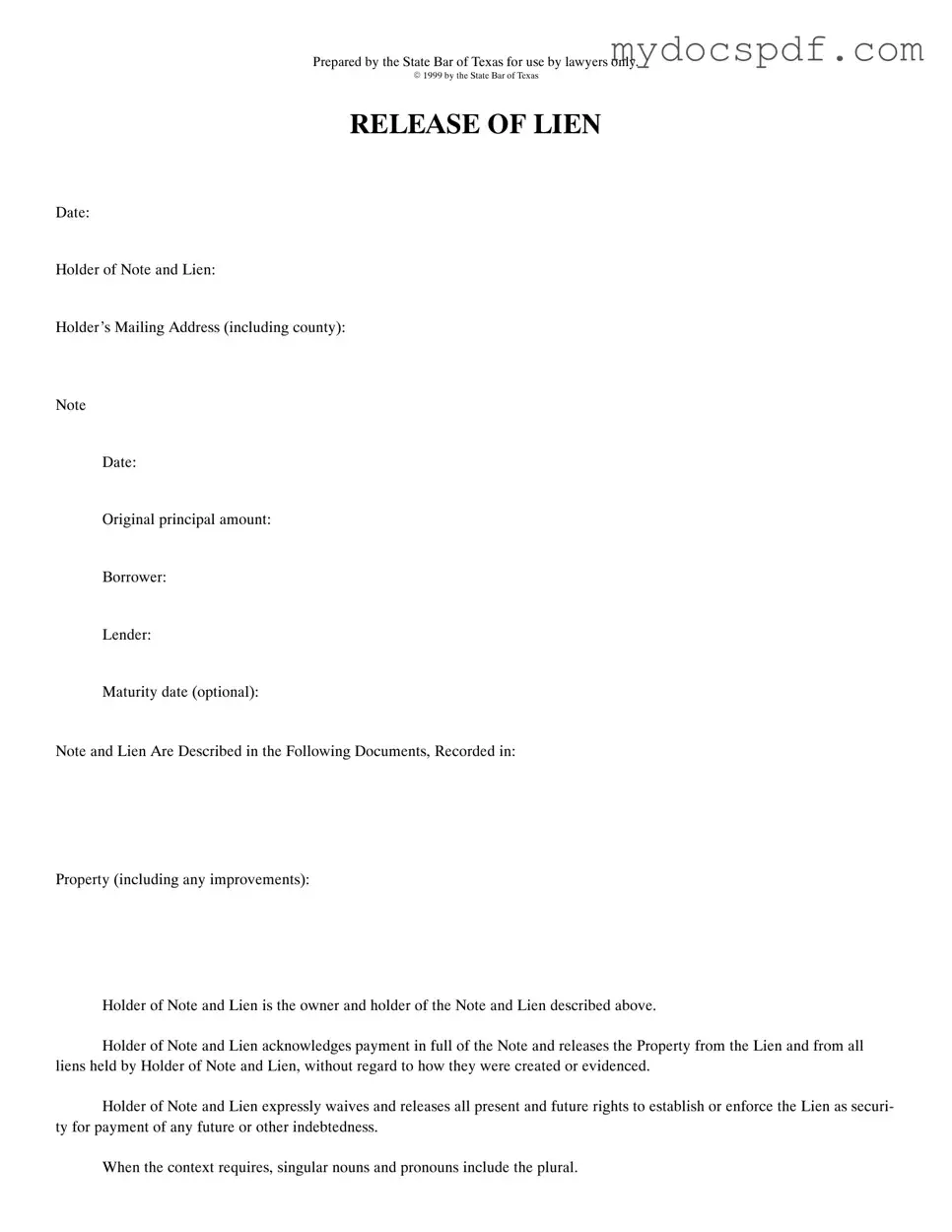The Release of Lien Texas form is a vital document in real estate transactions, particularly when it comes to settling debts secured by property. This form is specifically designed for use by lawyers and is prepared by the State Bar of Texas, ensuring that it meets legal standards. At its core, the form outlines essential details such as the date of the lien, the holder of the note and lien, and the original principal amount borrowed. It also specifies the property involved, including any improvements made to it. Importantly, the holder of the note acknowledges full payment of the debt, thereby releasing the property from any lien claims. This release extends to all liens held by the holder, regardless of how they were established. Furthermore, the document includes a waiver of rights to enforce the lien for any future debts, providing clarity and security for the borrower. Acknowledgments by a notary public are required, adding an extra layer of authenticity and legal weight to the form. The careful attention to detail in this document ensures that both parties can move forward without lingering financial encumbrances.
